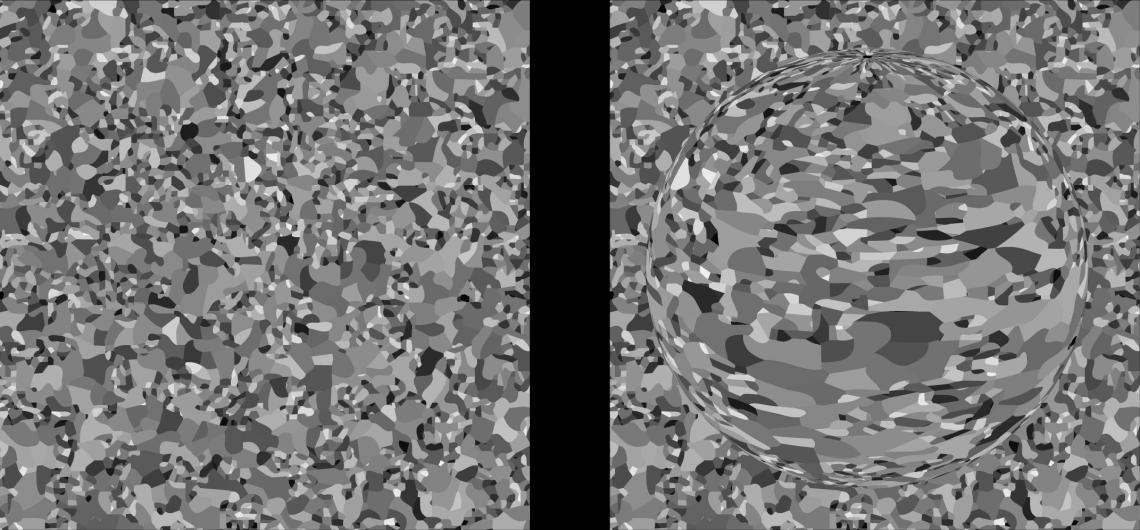Stereopsis Tests
Stereopsis is a critical component of human vision and is a visual trait shared by animals with front-facing eyes. The spacing between our eyes gives us an advantage. This slight offset causes our visual system to see an image from a slightly different perspective (try it now by looking at something far away and moving your hand back and forth between each eye!) The combination of these slightly different images allows the visual system to judge fine depth and create a 3-dimensional interpretation of the image. This becomes important when objects are close to one another or the task requires the visual system to provide exact information on where the body is relative to an object (thing threading a needle).
The slightly different perspective each eye sees is due to images falling on slightly different points on the retina of the eye. This is termed disparity and is the critical item that is measured in a stereopsis test.
Stereopsis is measured in the value seconds of arc - this is actually a very small value. To understand how small, first think of a circle that is made of up 360 degrees all the way around - the other way to think of this is a circle is made of 360 individual 1-degree segments. So, one degree of a circle represents 1/360th of the circle. In geometry, this 1-degree segment can be further divided into 60 smaller segments, termed minutes of arc. Each minute of arc can be further divided into 60 smaller segments - this is termed a second of arc (or arcsecond). So one arcsecond is 1/3,600th of a degree or 1/1,260,000th of a circle! That's some really fine vision!
Stereopsis is divided into two main components - coarse (or gross) stereopsis, which is important for large amounts of depth, and fine stereopsis, which is important for very small amounts of depth. Most stereo tests check both.
When patients have good stereovision, it can be an indicator of their binocular function as well. We need both eyes together to see in stereopsis. Otherwise, items in the world appear flat or 2D and we must use adaptations to see what others can see by just looking at an item. Shadows, size, and other indicators help us to determine how close and how far something is from us both when we have 3D vision and when we do not. The biggest difference is that the 3D vision can be more precise and accurate compared to the 2D visual cues that we might use to understand the depth of objects around us. The concept of stereopsis makes us realise the importance of two eyes in our lives and the aim in treating the bad eye with almost care even if the patient has another good eye. It’s the quality of life we are talking about.
Random Dot vs. Contour Tests
There are different methods of stereo testing targets. Random dot targets at first glance look like a bunch of scattered dots. These targets require the patient to combine the images to see a shape or pattern. Countour targets have a distinct shape but use smaller and smaller offsets of the shape to measure stereo ability. Most tests require some form of dissociation, either with polarized lenses or with red/green or red/blue glasses.

Above is an example of a random dot stereo target. This is a simulated image—the left box would be the patient's view without polarized lenses. The right box is what a patient with normal stereopsis would see (can you see the circle?)

This image set is an example of a contour test. The patient is instructed to identify the one target that appears to be popping out of the page. Some very high depth targets (example left) have a single-eye (monocular cues) that may give away the answer, even without using the polarized lenses. The second image is a general impression of what a patient with normal stereopsis would see. Lower depth targets are more difficult (third and fourth image).
Common Stereopsis Tests Used in the Eye Clinic
Titmus Stereo Test
The Titmus stereo test consists of a combination of contour targets. The most common targets are a series of rings for older patients, animals for children, and a large stereo fly that is used mainly for screening. The circles test from 800 down to 40 seconds of arc while the animals test 400 to 100 seconds of arc. The fly has variable stereo from the head to the thorax and contains disparity values from about 700 to 400 seconds of arc.
TNO Stereo Test
The TNO stereo test uses a random dot pattern. Red and green glasses are required to dissociate the patient. The test contains multiple plates with hidden objects and can measure disparity values down to 15 seconds of arc.
Lang Stereo Test
The Lang stereo test is unique in that no dissociating glasses are needed. This test is a random dot test that can test disparity values of 1200 arc seconds to 200 arc seconds.
Frisby Stereo Test
Similar to the Lang test, the Frisby test does not require the patient to wear dissociating glasses. Instead, the test uses transparent plates with different thicknesses to alter the disparity in the test. The test can be performed at different distances, which changes the disparity of the test. The test can measure values between 600 and 20 arc seconds.
Random Dot Stereo Tests
A number of stereo tests include the use of random dot stereo targets that are viewed with polaroid glasses. Some tests, such as the Random Dot E, use single plates for testing, while others may use shapes or animals embedded in the test. The level of disparity tested varies from test to test.
This test can also be a good indicator of if the patient is going to see things such as the 3D effects in movies for example. Often times, this is also an indication of if the patient can accurately see items in such books as, "Magic Eye". The illusory contours that exist in the Random Dot Stereo Tests also exist in books like the Magic Eye book.
The Vision Wiki
- Binocular Vision
- Vision Tests
- Suppression Tests
- Worth 4 Dot
- Tests of Stereopsis
- Cover Test
- Definitions
- Signs and Symptoms
- Blurry Vision
- Reading Problems
- Eye Strain
- Driving Problems
- Headaches
- Suppression
- Double Vision
- Motion Sickness and Car Sickness
- Pias Vision
- Visual Skills
- Visual Tracking
- Visual Fixation
- Stereopsis
- Depth Perception
- Visual Accommodation
- Visual Requirements for Baseball
- Visual Requirements for Pilots
- Reading
- Foundational Reading Skills
- Vision and Learning
- Fusion
- Convergence and Divergence
- Reading Skills
- Visual Processing
- Eye Problems
- Physiology of Vision
- Lazy Eye
- Lazy Eye Treatments
- Reading
- Fields of Study
- Research
- Glaucoma
- Virtual Reality
- Organizations
